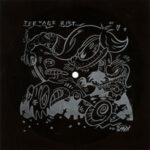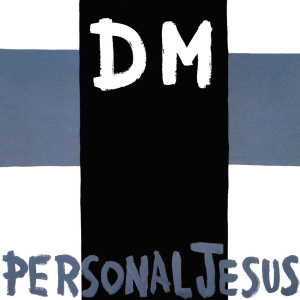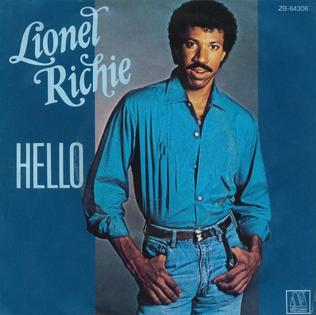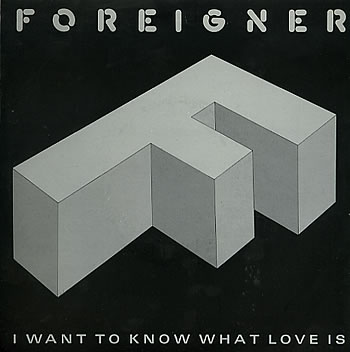 When Sonic Youth released “Teenage Riot” in 1988 as the opening track of their seminal album Daydream Nation, it wasn’t just another song — it was a manifesto. It was the sound of art and rebellion colliding, of noise and melody coexisting in a beautiful, volatile harmony. The track became both an anthem for disaffected youth and a signal flare announcing the future of alternative rock. At a time when mainstream radio was dominated by slick production and safe pop, “Teenage Riot” felt like a revelation: jagged, sprawling, and defiantly unconventional.
When Sonic Youth released “Teenage Riot” in 1988 as the opening track of their seminal album Daydream Nation, it wasn’t just another song — it was a manifesto. It was the sound of art and rebellion colliding, of noise and melody coexisting in a beautiful, volatile harmony. The track became both an anthem for disaffected youth and a signal flare announcing the future of alternative rock. At a time when mainstream radio was dominated by slick production and safe pop, “Teenage Riot” felt like a revelation: jagged, sprawling, and defiantly unconventional.
Clocking in at over six minutes, the song stands as one of Sonic Youth’s greatest achievements — a blend of chaotic guitar textures, hypnotic rhythm, and poetic subversion. It captures the spirit of the underground while predicting the explosion of alternative culture that would define the 1990s. If Nirvana’s Nevermind was the movement’s commercial ignition, “Teenage Riot” was its spark.
A Revolution Wrapped in Feedback
The opening minute of “Teenage Riot” is a masterclass in tension and anticipation. Kim Gordon’s whispered vocals float over abstract guitar loops, her voice like a quiet hum before the detonation. She murmurs, “Spirit desire, we will fall,” over a shifting landscape of feedback and drone — a surreal introduction that blurs the line between music and noise. Then, without warning, the song bursts to life.
Thurston Moore’s guitar hits like a tidal wave, joined by Lee Ranaldo’s angular chords and Steve Shelley’s propulsive drumming. The distortion isn’t just background texture — it’s the lifeblood of the track, creating a wall of sound that feels alive and unpredictable. Sonic Youth had long been known for their use of alternate tunings, prepared guitars, and unconventional playing techniques, and “Teenage Riot” showcases all of that experimentation distilled into something immediate and transcendent.
The moment the full band locks in, the song takes on a kinetic momentum that never fades. The guitars shimmer and growl in equal measure, weaving dissonance into something strangely melodic. Beneath the chaos, there’s an undeniable groove — a forward motion that feels unstoppable. It’s as if the song itself is sprinting toward freedom, dragging the listener along for the ride.
Lyrics of Uprising and Escape
On the surface, “Teenage Riot” might seem cryptic, but its message is clear once you understand the spirit behind it. Thurston Moore’s lyrics are a surreal call to arms — not a literal revolution, but a creative and cultural one. The song imagines an alternate reality where underground heroes replace corporate idols, where creativity reigns instead of conformity.
Moore once described the song as imagining “a world where J Mascis from Dinosaur Jr. is President.” That tongue-in-cheek idea captures the essence of “Teenage Riot”: the dream of a world led by the artists, weirdos, and free spirits instead of the power brokers and politicians.
Lines like “Everybody’s talking ’bout the stormy weather / And what’s a man do to but work out whether it’s true?” feel both abstract and incisive, a reflection on disillusionment and the search for authenticity. The chorus — “It’s getting kind of quiet in my city’s head / Takes a teenage riot to get me out of bed” — is equal parts existential sigh and rallying cry. It’s about the frustration of stagnation, the yearning for something that shakes the system awake.
What makes the lyrics so compelling is how they capture the duality of rebellion — the frustration and the exhilaration, the anger and the hope. There’s no clear narrative, but the imagery evokes a sense of restless possibility. It’s the sound of young minds rebelling against mediocrity, the poetic embodiment of underground culture’s eternal push against the mainstream.
The Sound of Sonic Youth’s Evolution
By the time Daydream Nation arrived, Sonic Youth had already established themselves as New York’s most daring avant-garde rock band. Their earlier work — Bad Moon Rising, EVOL, Sister — had explored the outer reaches of noise, texture, and atmosphere. But with “Teenage Riot,” they distilled their experimentation into something sharper and more accessible without compromising their artistic edge.
The track’s production captures the perfect balance between rawness and clarity. Unlike the murky recordings of their early albums, Daydream Nation was recorded with a new sense of precision. The guitars are massive but defined, the drums crisp and commanding. Producer Nick Sansano helped give the band’s sprawling sound a sense of space and structure without taming their ferocity.
The dual-guitar interplay between Thurston Moore and Lee Ranaldo is central to the song’s power. Instead of traditional rhythm-and-lead roles, the two guitars operate like dueling voices, trading harmonics, dissonant chords, and feedback loops. Their use of alternate tunings gives the song a shimmering, unstable quality — one moment it’s melodic, the next it’s chaotic. It’s like watching a tightrope walker balancing on the edge of collapse.
Steve Shelley’s drumming is the glue that holds it all together. His patterns are relentless but fluid, driving the song forward with a sense of urgency. His fills during the final chorus are especially electrifying, injecting bursts of adrenaline just when the track threatens to dissolve into feedback. Kim Gordon’s bassline is steady and understated, grounding the chaos in something tactile and physical.
From the Underground to the Mainstream (Without Compromise)
“Teenage Riot” was more than a song — it was a turning point. It marked the moment Sonic Youth transitioned from cult heroes to icons of the alternative movement. The song received heavy airplay on college radio and MTV’s 120 Minutes, helping the band reach a wider audience without sacrificing their experimental ethos.
Its success was a testament to how far underground music had come. Here was a band that made dissonance beautiful, that turned noise into poetry — and suddenly, people were listening. “Teenage Riot” became the unlikely gateway for countless fans discovering indie and alternative music for the first time.
The song’s influence rippled outward. Within a few years, bands like Nirvana, Smashing Pumpkins, and Pavement would draw inspiration from Sonic Youth’s fearless approach to sound. Thurston Moore and Kim Gordon even championed Nirvana early on, helping them sign to Geffen Records — a direct link between “Teenage Riot”’s underground idealism and the mainstream explosion of grunge.
The Emotional Core Beneath the Noise
Despite its sprawling structure and feedback-soaked guitars, “Teenage Riot” is deeply emotional. There’s a sense of yearning that runs through it — a longing for change, for movement, for something bigger than the self. The track captures what it feels like to be young and restless, stuck between disillusionment and idealism.
The interplay of calm and chaos within the song mirrors that emotional duality. The intro’s quiet murmurs feel like a dream, while the explosive main section feels like waking up to the world’s raw intensity. The transitions aren’t clean or polished; they’re organic, messy, and alive — just like the emotions they evoke.
There’s also something undeniably cinematic about the song’s structure. The buildup, the release, the extended instrumental passages — it all unfolds like a narrative without words. You can feel the story even if you can’t describe it. The guitars don’t just play chords; they express moods, shifting from defiance to euphoria to exhaustion.
The Cultural Context: A Generation’s Anthem
By 1988, the cultural landscape of rock music was changing. The glamour of the early ’80s was fading, and the underground was growing restless. Punk had splintered, post-punk had become introspective, and mainstream rock felt bloated and disconnected. “Teenage Riot” arrived at exactly the right moment — a bridge between the underground art scene and a new era of cultural rebellion.
The title itself encapsulates the spirit of that transition. “Teenage Riot” isn’t just about adolescents rebelling — it’s about a mindset, a refusal to accept complacency. It’s about rediscovering the power of passion in a world numbed by conformity. The song became a rallying cry for those who wanted music to mean something again, to shake the foundations instead of reinforcing them.
Listening to it now, the track still feels revolutionary. Its energy hasn’t dulled, its urgency hasn’t faded. It’s the kind of song that still makes you want to turn the volume up, to feel the walls vibrate, to remember what it feels like to want change so badly it hurts.
Sonic Architecture: Organized Chaos
What’s most striking about “Teenage Riot” is how meticulously crafted its chaos is. Every guitar squall, every harmonic scrape, every rhythmic shift feels deliberate. Sonic Youth weren’t just making noise for noise’s sake — they were composing with dissonance, treating feedback as melody, distortion as texture.
The band’s use of alternate tunings allowed them to create sounds that simply didn’t exist in standard rock vocabulary. Moore and Ranaldo’s guitars often resonated in strange overtones, creating an otherworldly shimmer that became Sonic Youth’s signature. In “Teenage Riot,” those elements coalesce into something almost symphonic — a noise symphony that balances on the edge of collapse without ever falling apart.
As the song builds toward its final minutes, everything intensifies. The guitars spiral upward, the drums accelerate, and the energy becomes almost transcendent. It’s both ecstatic and chaotic — a perfect encapsulation of Sonic Youth’s philosophy. The music isn’t about perfection; it’s about liberation.
Legacy: The Eternal Daydream
Decades after its release, “Teenage Riot” remains one of the most defining songs in alternative rock history. It captures a moment when underground music was bursting at the seams, ready to reshape the mainstream. Its influence can be heard everywhere — from the fuzzy textures of early ’90s grunge to the dreamy dissonance of modern indie rock.
But more than its influence, the song endures because it feels timeless. Its message — that art and rebellion are inseparable, that noise can be beautiful, that youth is a state of mind — still resonates. Every generation needs its own “teenage riot,” and Sonic Youth provided the blueprint.
The song also stands as the perfect entry point into Sonic Youth’s catalog. It’s accessible enough to draw listeners in but complex enough to reward deep listening. It captures everything the band stood for: experimentation, integrity, freedom.
Conclusion: The Riot Never Ends
“Teenage Riot” is not just a song; it’s a revolution condensed into six minutes of sound. It’s the thrill of possibility, the power of art to challenge and transcend, the feeling of standing on the brink of something new. Sonic Youth transformed noise into liberation, turning guitars into weapons of creation and rebellion.
Even now, when the song’s opening chords hit, it feels like the start of something bigger than music — a spark of change, a reminder of what it means to feel alive in a world that wants you numb. It’s not about chaos for chaos’s sake; it’s about the beauty within that chaos, the meaning within the noise.
Sonic Youth didn’t just write “Teenage Riot.” They embodied it. And every time the song plays, every time those feedback-soaked guitars roar to life, the riot begins again.


